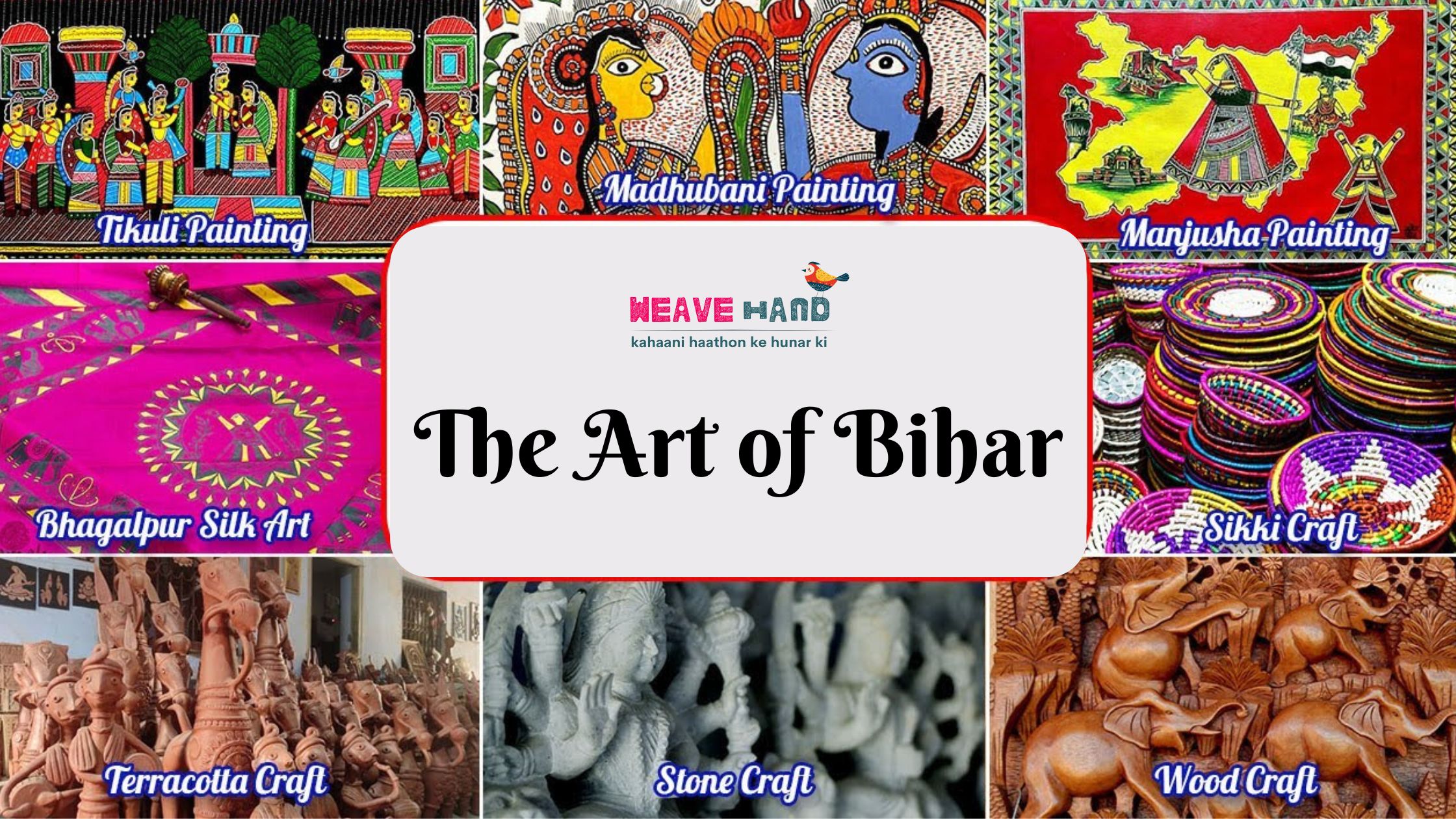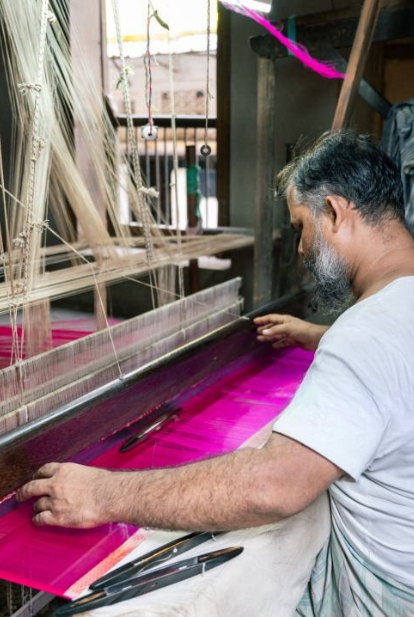Bihar, a state rich in history and culture, is home to some of India’s most beautiful traditional arts. These art forms have been passed down through generations and reflect the lives, beliefs, and traditions of the people. The most famous are Tikuli Art, Madhubani Painting, Manjusa Art, and Sujni Embroidery. Each of these arts has its history, style, and significance. Let’s explore them in simple terms
1. Tikuli Art: The Shiny Craft of Patna
Tikuli Art has its roots in Patna, Bihar. "Tikuli" means "bindi," the decorative dot worn on the forehead by women. Originally, this art was used to make beautiful, shiny bindis. Over time, it evolved, and artists started using the same techniques to create larger pieces like wall hangings, trays, and coasters.
- Themes: Tikuli Art often features flowers, peacocks, and geometric designs.
- Technique: Artists paint on glass or wood with bright colors and fine brushes. They add gold or silver foil to make the art sparkle and finish it with a glossy varnish.
- Difference: Tikuli Art is more decorative and is often used in home décor, unlike other Bihar art forms that are more traditional or religious.
2. Madhubani Painting: The Folk Art of Mithila
Madhubani Painting, also called Mithila Art, comes from the Mithila region of Bihar. It is said to have started when King Janak asked artists to paint during his daughter Sita’s wedding to Lord Rama. Traditionally, women painted these artworks on the walls and floors of their homes during festivals and special occasions.
- Themes: Madhubani paintings show scenes from Hindu mythology, nature, and daily life. Common motifs include gods, goddesses, animals, and flowers.
- Technique: The paintings are known for their bold lines, detailed patterns, and bright colors. Artists use natural dyes and often paint with fingers, twigs, or brushes.
- Difference: Madhubani is famous for its storytelling style and religious themes. Compared to other Bihar art forms, it is also more well-known worldwide.
3. Manjusa Art: The Storytelling Art of Bhagalpur
Manjusa Art comes from Bhagalpur, Bihar, and is linked to the Bishahari Puja festival, which honors the serpent goddess. This art form was originally used to decorate "Manjusa" boxes, which were carried in processions during the festival.
- Themes: Manjusa Art tells the story of Bihula-Bishahari, a local folklore. It often features serpents, boats, and divine figures.
- Technique: The art is known for its angular and geometric patterns. Artists use bright colors like red, yellow, and green, and the designs are usually symmetrical.
- Difference: Unlike Madhubani, which has flowing lines, Manjusa Art is more structured and angular. It focuses on storytelling and folklore.
4. Sujni Embroidery: The Stitched Art of Bhagalpur
Picture a grandmother, lovingly stitching stories into an old cotton saree—this is the essence of Sujni embroidery. Originally a way to upcycle old fabric into quilts, Sujni became a medium of expression for women, depicting daily life, nature, and social themes through delicate stitches. Today, it finds a place in fashion and décor, proving that tradition can be as soft as a thread and as strong as a legacy. Sujani is a form of embroidery originating from the Bhusura village of Bihar in India. Sujani is said to have begun around the 1920s and was only practiced by the Rajput women for personal use.
- Themes: Sujni Embroidery often features flowers, leaves, animals, and scenes from village life.
- Technique: Artists create detailed patterns using a simple running stitch and bright threads to make the designs stand out.
- Difference: Sujni is different because it is a textile art. It is more practical and is often used in everyday items like quilts and clothes
Comparing the Art Forms
Art Form | History | Themes | Technique | Unique Feature |
| Tikuli Art | Originated in Patna for bindis | Flowers, peacocks, geometric designs | Lacquer, gold foil, glossy finish | Decorative and shiny |
| Madhubani | Started in Mithila for royal weddings | Mythology, nature, daily life | Bold lines, bright colors | Storytelling and religious themes |
| Manjusa Art | Linked to Bishahari Puja in Bhagalpur | Folklore, serpents, divine figures | Angular, geometric patterns | Focus on symmetry and storytelling |
| Sujni Embroidery | Began as quilt-making in rural Bihar | Nature, village life | Running stitch, bright threads | Textile-based and practical |
Conclusion
The traditional arts of Bihar are not just beautiful to look at but also tell stories of the state’s rich history and culture. Tikuli Art shines with its glossy designs, Madhubani Painting tells tales of gods and nature, Manjusa Art shares folklore through geometric patterns, and Sujni Embroidery brings beauty to everyday fabrics.
Together, these art forms keep Bihar’s traditions alive and showcase the creativity of its people.



